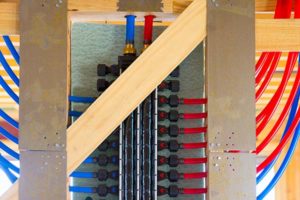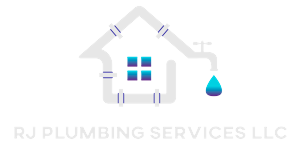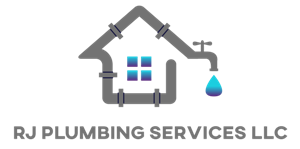Residential Repipe FAQs
FAQs About Plumbing Repiping Services
 Repiping your plumbing system is an investment. New pipes last longer, which saves you on maintenance and major repairs. Getting your home repiped can also increase your property value, making it a valuable project if you plan on selling your home. Most importantly, though, a whole house repipe makes your day-to-day life easier. When you know you can depend on your plumbing system, life is much less stressful. That’s priceless.
Repiping your plumbing system is an investment. New pipes last longer, which saves you on maintenance and major repairs. Getting your home repiped can also increase your property value, making it a valuable project if you plan on selling your home. Most importantly, though, a whole house repipe makes your day-to-day life easier. When you know you can depend on your plumbing system, life is much less stressful. That’s priceless.
PEX is a flexible plastic pipe capable of running for long stretches with few connections. Since it is flexible and cheap, PEX has quickly gained popularity as a replacement for copper in residential and commercial use. While installation and flexibility are some of the best traits offered by PEX, copper pipes are tried-and-true with decades of durability and the ability to withstand outdoor use and high temperatures.
Your plumbing is an entire network of pipes made of different materials designed to keep water flowing. You may wonder: if they’re all designed to do the same thing, why is it necessary to have different types? The truth is the different types of plumbing pipes serve different purposes ranging from conveying sewage to drinking water.
This is why it’s important to recognize that there are a variety of different materials and sizes used for plumbing pipes. It mainly boils down to what the pipe’s purpose is.
If you’re building a new home or making changes to your current plumbing system, you may be curious about the types of plumbing out there. RJ Plumbing Services is here to explain the different types of pipes used for plumbing so you can make informed decisions.
Ranging from sewage to high-temperature durable and low-temperature durable, plumbing pipes are designed to withstand whatever’s being poured down them. Some are better built for certain liquids than others.
- Copper: Copper has been a commonly used plumbing pipe in many households for a long time — and continues to be. Copper pipes are very flexible, able to withstand constant warm water flow, and are 100% recyclable!
- PEX: PEX pipes are an outstanding, durable choice in many homes. These flexible pipes are ideal for transporting water to your home since high water pressure won’t impair the pipe’s shape.
- PVC: PVC pipes are great for avoiding rust, but they can be easily impaired by tree roots. Although they were once quite common in households, they aren’t any longer.
- Galvanized Steel: Most commonly found in older settlements, galvanized steel pipes are strong and easy to install and replace—but rust easily, causing clogs.
If you live in an older home, or if you’re dealing with low water pressure or other recurring issues, it may be time to hire a professional to repipe your plumbing. We understand this can seem like a massive undertaking with a costly bill to boot, but it’s better to think of it as an important investment in your long-term peace of mind and your home’s property value.
Every project is different. The price of repiping a house varies. With that in mind, RJ Plumbing is here to help explain the factors that go into the cost of repiping a home.
Residential repiping services cost anywhere from $1,500 to $15,000+. Yes, that’s a huge range. The good news is that in most cases you won’t spend more than $15,000.
Here are the main factors that go into determining the cost of a whole house repiping:
- Location of damaged pipes: If the pipes are in more challenging areas they will take more effort and time in order to repair them.
- Size of home: The bigger the home, the more piping is in need of replacement.
- Diameter of drainage and supply pipes: Some pipes are wider in diameter than others, meaning more material is being used in order to replace those pipes.
- Material of pipes: copper, PEX, or PVC, are all materials used in pipe replacement with different costs.
In older homes, pipes were made with materials that are now considered outdated or hazardous for your health. These include lead pipes and corrosion-prone copper or galvanized pipes. Another common reason for imminent repiping is frequent leaks occurring in your home. While these can be patched up from time to time, there comes a point where new pipes are mandatory. Signs you may need new pipes include:
- Decrease in water pressure
- Discolored water (red, brown, or full of flakes are a sign of corrosion)
- Frequent leaks
- Home built with galvanized pipes (prone to rust and corrosion)
- You plan to sell your home soon
There are several materials used for repiping a home. Each has pros and cons regarding features such as price or invasiveness. These materials include:
- Copper: durable, resistant to leaks, but high in price
- PVC: Low cost and easy install, but cannot be used with hot or drinking water
- CPVC: Suitable for heat and drinking, but more expensive than PVC and may split when frozen
- PEX: Flexible, heat and freeze resistant, but still considered new, so ongoing tests for contamination
Each project is different. Some homes need a simple fix, while others need whole-house pipe repair. With detailed preparation and qualified experts, you can return to your home with it looking as good as new. What does the process look like?
- After a property inspection to find the problem area(s), the plumber will cut minimal holes in your walls and ceilings to access, remove, and install the new pipes.
- Once all new pipes are installed, tests are conducted to verify that everything is running smoothly, and then holes will be filled, patched, and repainted.
- Within a few days, a city inspection will occur to ensure your home is safe for occupancy.
Depending on the house size, the number of bathrooms, and the project itself, the timespan can range from a single day to a whole week. While your water is shut off while technicians are working on the piping project, it will be turned back on at the end of each day. In the meantime, some ways to prepare for the project may include:
- Consider where children and/or pets will be during the day.
- Stock up on water for drinking or cooking.
- Utilize showers and appliances in the morning or evenings while workers are gone.
If you have concerns about disruptions or clutter during the repiping process, keep in mind that businesses, such as RJ Plumbing Services take every step necessary to maintain the integrity of your home. For example, RJ Plumbing Services respects your home with each stage of the repiping project by protecting your floors, fixtures, and furnishings, followed by cleaning the job site at the end of each day.
Coliform bacteria are known to live or collect in rusty water and can cause gastrointestinal diseases. The rust from iron doesn’t just alter the color of your water – you can also swallow large chunks of rust, causing injury to your throat and digestive system. Beyond rust chunks in your water is the life-threatening health issue of lead poisoning caused by excessive microscopic rust in your water. Signs of lead poisoning include:
- Fever
- Headache
- Dizziness
- Low Blood Pressure
- Fast or weak pulse
- Shortness of breath
- Fluid in lungs
- Greyish or bluish skin
- Jaundice Seizures
While these are mild to moderate signs of iron poisoning, more serious cases of iron poisoning can cause death by liver failure or a circulatory system shock.
Besides rust infiltrating your water, it can also build up within the pipe and make it corrode. This corrosion is a slow deterioration of the pipe and can eventually cause clogs, reduce water pressure, cause leaks, or burst the pipe. Leaky or burst pipes can spread water to the structure of the home and introduce a mold problem. The damage to pipes can also directly impact appliances. Since water pressure is vital for washing machines and dishwashers, the pipes will slow the machines down until they eventually stop working altogether.
Identifying rust in your water has several observable traits. These include:
- Metallic odor
- Reddish brown appearance in water or stains on clothes
- Leaks
- Clogs
- Low water pressure
- Temperature changes
It may be hard to notice rust in water because it can come through clear but leave rust stains later in bathtubs, showers, dishes, or clean laundry. Stains can be difficult to clean and cause frustration when items in the home become ruined. One way to know for sure is to schedule an in-home water test to verify what is in your water and if steps need to be taken to address the water quality.
Some short-term solutions may be sufficient to mitigate the amount of rust in water, but if pipes are old and corroded, the long-term solution is to remove the old pipes. Some possible solutions are:
- Run the water: Rust may come from debris in the water lines. It’s possible to run the water for a few minutes to try and flush out the debris in your pipes.
- Install a rust filter: Home rust filters are available to reduce or eliminate rust in water.
- Replace the pipes: The ultimate solution is to remove old pipes and replace them with new ones. Pipes have a lifespan and rust problems are one of the many signs that a repiping job is on the horizon.
Ready For a Quote?
Leave your information and we will be in touch
Ready for a Quote?
Leave your Information and we will be in touch.
Repiping Experts in Vancouver WA
Picking out the correct pipes for your home can be challenging, especially if you’re unfamiliar with plumbing. Unless you’re a pipe replacement expert, we recommend turning to RJ Plumbing Services!
We specialize in plumbing repipe projects. We can determine which type of pipe is recommended for your home and repipe your entire home. We proudly serve the Battle Ground WA and Vancouver WA area.
Contact us today to get a custom quote on your repiping project!
Residential Repipe FAQs in Clark County and Surrounding Areas
Battle Ground | Vancouver | Salmon Creek | Ridgefield | Mill Plain Walnut Grove | Fishers Landing | Camas | Yacolt | Amboy | La Center | Hockinson | Hazel Dell | Brush Prairie
Home » Plumbing Repipes » Residential Repipe FAQs

